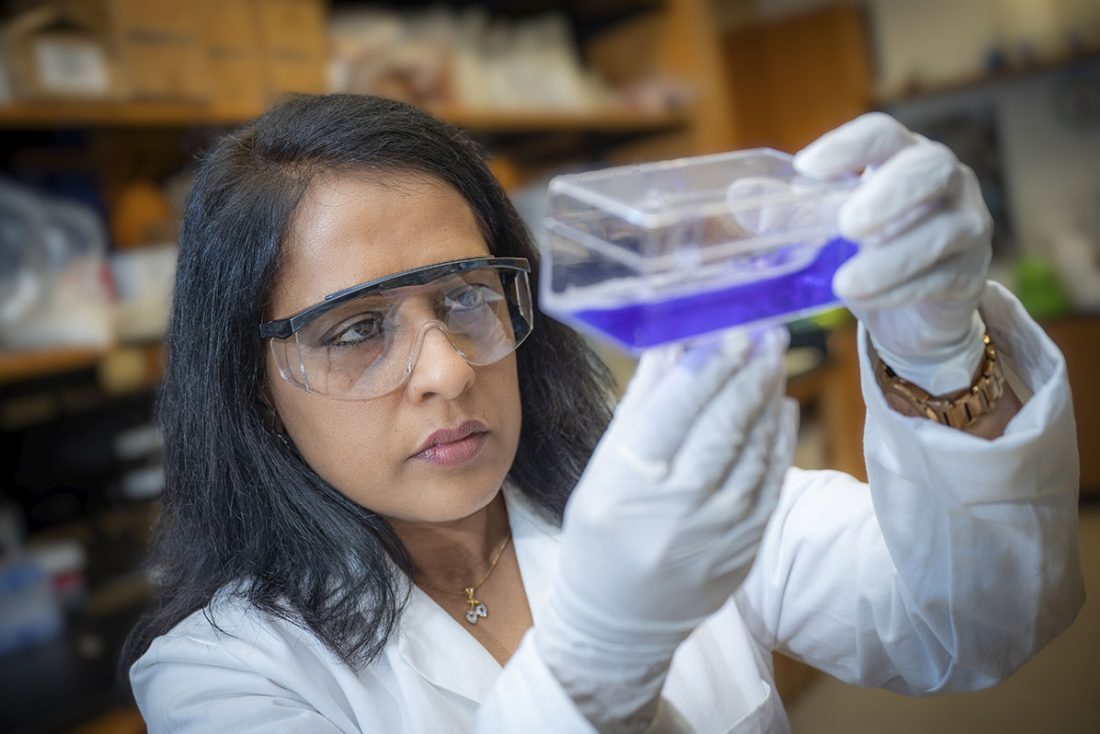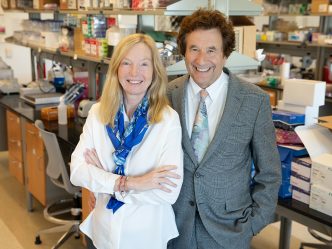Scientists at the Medical College of Georgia at Augusta University are searching for a new treatment target for a common complication of diabetes that can cause retinal blood vessels to break down, leak or become blocked.
Diabetic retinopathy is a serious eye disease and a leading cause of blindness that results when sustained high blood sugar levels associated with diabetes cause damage to the retina – the part of the eye that detects light – over time. That can happen in a number of ways, from inflammation to overgrowth of new and abnormal blood vessels.
The current treatment standard is anti-VEGF, which targets and blocks the activity of vascular endothelial growth factor, a protein that promotes the growth of blood vessels and causes them to leak. But that treatment doesn’t work for everyone.
With a new $1.5 million grant from the National Eye Institute, vascular and endothelial biologist Shruti Sharma, PhD, and a team from the MCG Center for Biotechnology and Genomic Medicine, hope to zero in on a new treatment pathway. They suspect the key to that may be a protein called Interleukin-6 (IL-6), a versatile protein involved in both immunity and inflammation throughout the body.
“IL-6 is a major cytokine that is elevated in almost all inflammatory conditions,” Sharma explained. “There have been therapies that have targeted IL-6, but whenever we try to completely block it, that never seems to work. I don’t think it’s that black or white.”

She and her research team think the answer lies in how IL-6 signals or initiates physiological changes in the body. One mechanism involves cis-signaling, where IL-6 interacts with its receptor on the cell surface, while the other involves trans-signaling, which uses a soluble form of IL-6 receptor.
The harmful inflammatory effects of IL-6 are accomplished mainly through trans-signaling, while beneficial regenerative effects are accomplished through cis-signaling.
“So that’s where the problem was. When you’re globally blocking all the IL-6, you are taking away the good and the bad,” Sharma said. “We already know that trans-signaling works through endothelial cells because they lack the membrane-bound receptor, which would explain the inflammation and overgrowth of blood vessels in the eye.”
In preliminary studies, she and her research team found that blocking the pro-inflammatory IL-6 trans-signaling, with a drug called sgp130Fc, helped balance levels of two important proteins in the retina – VEGFA, which can damage the blood-retina barrier and increase oxidative stress, and VEGFB, which is believed to be protective. They believe that disruption to that balance is what ultimately leads to the development of diabetic retinopathy.
They hope finding the way to restore that balance will come from taking a closer look at Müller glial cells, which play a major role in maintaining homeostasis and the exchange of nutrients in the retina. They also have membrane-bound IL-6 receptors and “participate” in both cis- and trans-signaling. “There are also certain factors released by these glial cells that help activate endothelial cells,” Sharma said.
They will study several different animal models – one that uses trans-signaling, one that uses cis-signaling and one that does both – and gather baseline measurements of the photoreceptor response, which can tell them how well the eye can detect light, a key indicator of retinal health or disease.
“We believe that when we selectively inhibit trans-signaling using this drug, while allowing cis-signaling to continue, we will be able to stop the damage,” Sharma said.
A recent global analysis estimated that about 103 million people worldwide have diabetic retinopathy, and that number could rise to 161 million by 2045.
Discoveries at Augusta University are changing and improving the lives of people in Georgia and beyond. Your partnership and support are invaluable as we work to expand our impact.
 Augusta University
Augusta University




